Today’s blog post takes a look at the ins-and-outs of turning to a national roofing company for your commercial roofing needs. Companies with a national presence have specialized resources or operations for providing top-grade commercial roofing services.
Before examining how a national roofing company offers value, though, it is helpful to take a brief glance-over what makes up the American roofing industry today.
The American Roofing Market and Its Influence
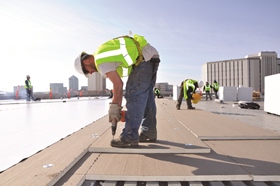
In terms of their resource availability, a multi-state roofing services provider, or even a nationwide roofing contractor firm, may be a good fit for their needs.
Here are a few things that a national roofing company offers that may bear consideration.
Advantages of a National Roofing Contractor Firm
- Service availability. For building owners or companies that need roofing services now, a nationwide roofing company can be a great answer. A roofing company with national capabilities will be able to quickly dispatch a qualified service provider to the customer’s location. If required, it could even bring in roofing contractors from other areas to handle the work. This service provider availability can be invaluable when inclement weather or recurring, out-of-the-ordinary climate patterns make getting timely bids from roof contractors challenging.
For instance, in some parts of the United States, a long, harsh winter period will delay an area’s construction cycle and limit the time in which roofing contractors can actually do work. If construction logistics or coordination in a given area become compressed or stretched thin, bringing in a roofing expert from another region will ensure timely work completion all the same.
- Resources, resources, resources. A national roofing company will have resources that are often unavailable to local, one-man roofing businesses or even some multi-state roofing companies. A national company will have a developed infrastructure for making sure a customer’s needs are addressed quickly and effectively. It is also likely to have relationships with vendors that provide third party services at reduced rates or are swiftly accessible. Those resources are not always found in the hands of smaller companies.
For example, say a large building with a 40,000-square-foot roof takes extensive damage in a storm. Getting funds for building repairs will require filing a claim with one’s insurance carrier, and bigger-amount claims can take a long time to negotiate. A larger-scale roofing company may have partnerships or “preferred vendor” relationships with providers such as professional public adjusting firms for helping someone navigate the maze of the insurance claims process. More established or professional vendors, such as a multi-state public adjusting firm, will then be available to help the customer with his or her situation. In a nutshell, the scale of the nationwide roofing company’s operations gives it access to partners or vendors which can extend customer value.
- Services from providers backed by a nationwide reputation for credibility. A roofing contractor that a nationwide company sends out will be a qualified expert in his tradecraft. Because national roofing companies have infrastructures in place for ensuring their service providers are top-notch, they carefully vet and then vouch for contractors they let into their national contractor networks.
A national company will have also built up its reputation over the years. It will be careful with whom it associates its reputation of credibility and expertise.
- Accountability for rendered services. Because it is a bigger-scale operation, a national company will be more accountable to its customers for its service-providing. Reputation is paramount in the roofing industry, and larger-scale companies that offer poor customer service or workmanship over time will suffer.
Particularly, a national roofing company could be impacted in a number of ways:
o Unsatisfied customers that feel moved to post reviews of their negative experience online (more likely to happen if a roofing company is nationwide)
o National or multi-state partners that choose to slow down or cut off business ties
o Impacted business relationships with roofing material manufacturers with which the roofing company has aligned itself or uses
o Drop-offs in the numbers of customers who engage that company’s services in the future
o Lost opportunities for further business build-up or expansion due to a poor reputation
In short, a national roofing contractor firm can offer the promptness, expertise, professionalism, resource availability, helpful partnerships, accountability, and infrastructure needed to deliver exceptional results for your roofing needs.
The National Roofing Partners You can Trust
Choice Roof Contractor Group represents a nationwide network of professional, quality-minded roofing experts who specialize in commercial roofing services. All of our members are carefully vetted for professional capability, impeccable ethics, commitment to excellence, and a ‘customers-first’ mindset. They also all go through the warranty certification program for Conklin roofing products, which they use because of this product brand’s exceptional 35+ year reputation for lasting protection and energy efficiency.
Should you be interested in learning more about how our members are prepared to take on any roofing challenge, give us a call today at 800-670-5583.
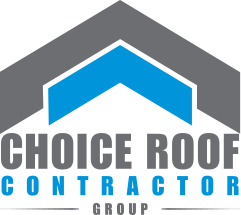
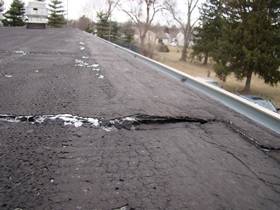 Today’s blog post covers common roofing problems, building on top of previous blog posts about
Today’s blog post covers common roofing problems, building on top of previous blog posts about 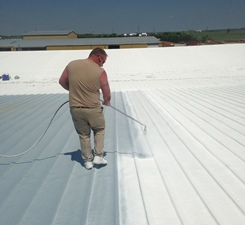 Since the
Since the 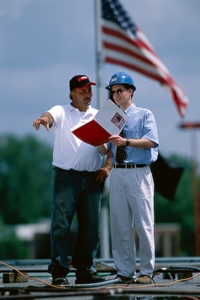 “Anybody that has doubts whether a white roof coating makes a difference needed to be in our building this summer on those 100 degree days. Usually, the air conditioners struggle and it gets very hot in the shop. With our new white roof, the air conditioners were cycling and customers and employees were commenting on how nice it was inside the building.”
“Anybody that has doubts whether a white roof coating makes a difference needed to be in our building this summer on those 100 degree days. Usually, the air conditioners struggle and it gets very hot in the shop. With our new white roof, the air conditioners were cycling and customers and employees were commenting on how nice it was inside the building.” In this blog post, we discuss how to hire a commercial roofing contractor. Our previous blog post featuring
In this blog post, we discuss how to hire a commercial roofing contractor. Our previous blog post featuring 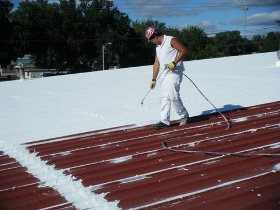 When the first acrylic roof coating was introduced in the 1970s, the commercial roofing industry had some dramatic changes. Public interest in energy-efficient roofing began strengthening. Roof coatings brought about the launch of the cool roof system and helped paved the way for organizations such as ENERGY STAR®, the Cool Roofs Rating Council®, and others to gain traction as recognized accreditation parties of energy-efficient roofing.
When the first acrylic roof coating was introduced in the 1970s, the commercial roofing industry had some dramatic changes. Public interest in energy-efficient roofing began strengthening. Roof coatings brought about the launch of the cool roof system and helped paved the way for organizations such as ENERGY STAR®, the Cool Roofs Rating Council®, and others to gain traction as recognized accreditation parties of energy-efficient roofing.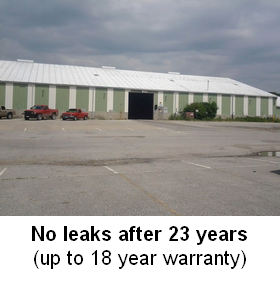 Because they are fully adhered and seamless, roof coatings are an ideal solution for “upgrading” an old commercial roof to withstand ponding water, powerful winds or heavy hailstorms, and other weathering effects. Best of all, generally speaking coatings have strong elastomeric properties, which mean they expand and contract with the sun’s heat over the course of a day.
Because they are fully adhered and seamless, roof coatings are an ideal solution for “upgrading” an old commercial roof to withstand ponding water, powerful winds or heavy hailstorms, and other weathering effects. Best of all, generally speaking coatings have strong elastomeric properties, which mean they expand and contract with the sun’s heat over the course of a day.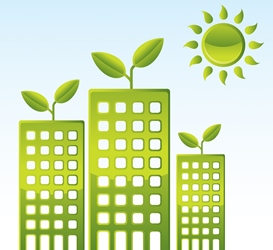 According to the U.S. Environmental Protection Agency, “sustainability” refers to public and private sector efforts to bring social and business conditions in line with quality standards for environmental well-being. Parties that involve themselves in these efforts include the general public, small businesses, large corporations, not-for-profit organizations, and agencies at all levels of government. They strive to improve how they conduct themselves or do business in a way that “sustains” the environment and promotes human health.
According to the U.S. Environmental Protection Agency, “sustainability” refers to public and private sector efforts to bring social and business conditions in line with quality standards for environmental well-being. Parties that involve themselves in these efforts include the general public, small businesses, large corporations, not-for-profit organizations, and agencies at all levels of government. They strive to improve how they conduct themselves or do business in a way that “sustains” the environment and promotes human health.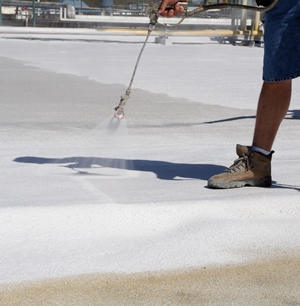 When someone is looking at a white roof coating’s efficacy, it is helpful to keep these things in mind:
When someone is looking at a white roof coating’s efficacy, it is helpful to keep these things in mind: The increasing market for commercial roof coatings lines up with projected increasing demand for green building materials in the United States. The Freedonia Group, a market research firm, said in one of its Green Building Reports that strong demand for green building materials in the United States will lead to a green building products market worth $86.6 billion in 2017. The Freedonia Group also projects that demand for U.S. green building materials will increase 11 percent per year.
The increasing market for commercial roof coatings lines up with projected increasing demand for green building materials in the United States. The Freedonia Group, a market research firm, said in one of its Green Building Reports that strong demand for green building materials in the United States will lead to a green building products market worth $86.6 billion in 2017. The Freedonia Group also projects that demand for U.S. green building materials will increase 11 percent per year.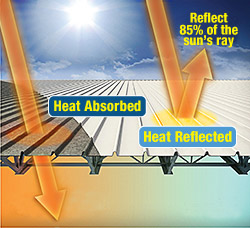 There are a few general economic indicators that can also illustrate the market growth opportunities for commercial roof coatings. One area in which these economic indicators can be found is in energy usage and increased governmental efforts to reduce American energy consumption. According to the U.S. Environmental Protection Agency, building owners and roof contractors have utilized cool roof products on residential, industrial, and commercial buildings for over 20 years. Cool roof systems stand out for their ability to reflect sunlight and heat away from a building as well as emit absorbed heat.
There are a few general economic indicators that can also illustrate the market growth opportunities for commercial roof coatings. One area in which these economic indicators can be found is in energy usage and increased governmental efforts to reduce American energy consumption. According to the U.S. Environmental Protection Agency, building owners and roof contractors have utilized cool roof products on residential, industrial, and commercial buildings for over 20 years. Cool roof systems stand out for their ability to reflect sunlight and heat away from a building as well as emit absorbed heat.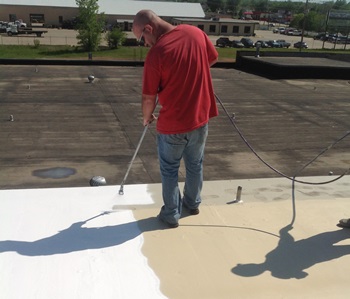 Because the commercial roofing marketplace is already extremely competitive, commercial roof contractors must strongly position themselves to take advantage of these opportunities. For landing big jobs on sizable commercial roofs, they must present themselves as true professionals and show that they can provide exceptional value to prospective customers.
Because the commercial roofing marketplace is already extremely competitive, commercial roof contractors must strongly position themselves to take advantage of these opportunities. For landing big jobs on sizable commercial roofs, they must present themselves as true professionals and show that they can provide exceptional value to prospective customers.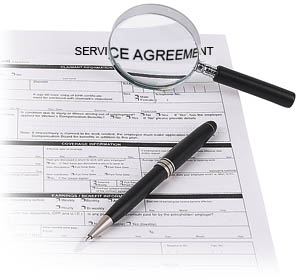 Roof maintenance and service agreements are a key part of making sure that roofs get the long-term expert care they need. Commonly known as
Roof maintenance and service agreements are a key part of making sure that roofs get the long-term expert care they need. Commonly known as 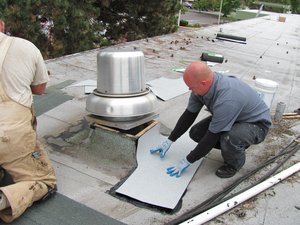 With
With 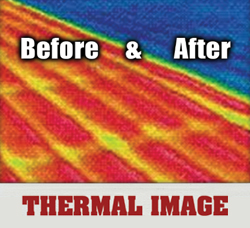 Because energy-efficient roofing is becoming more popular with building owners,
Because energy-efficient roofing is becoming more popular with building owners, 